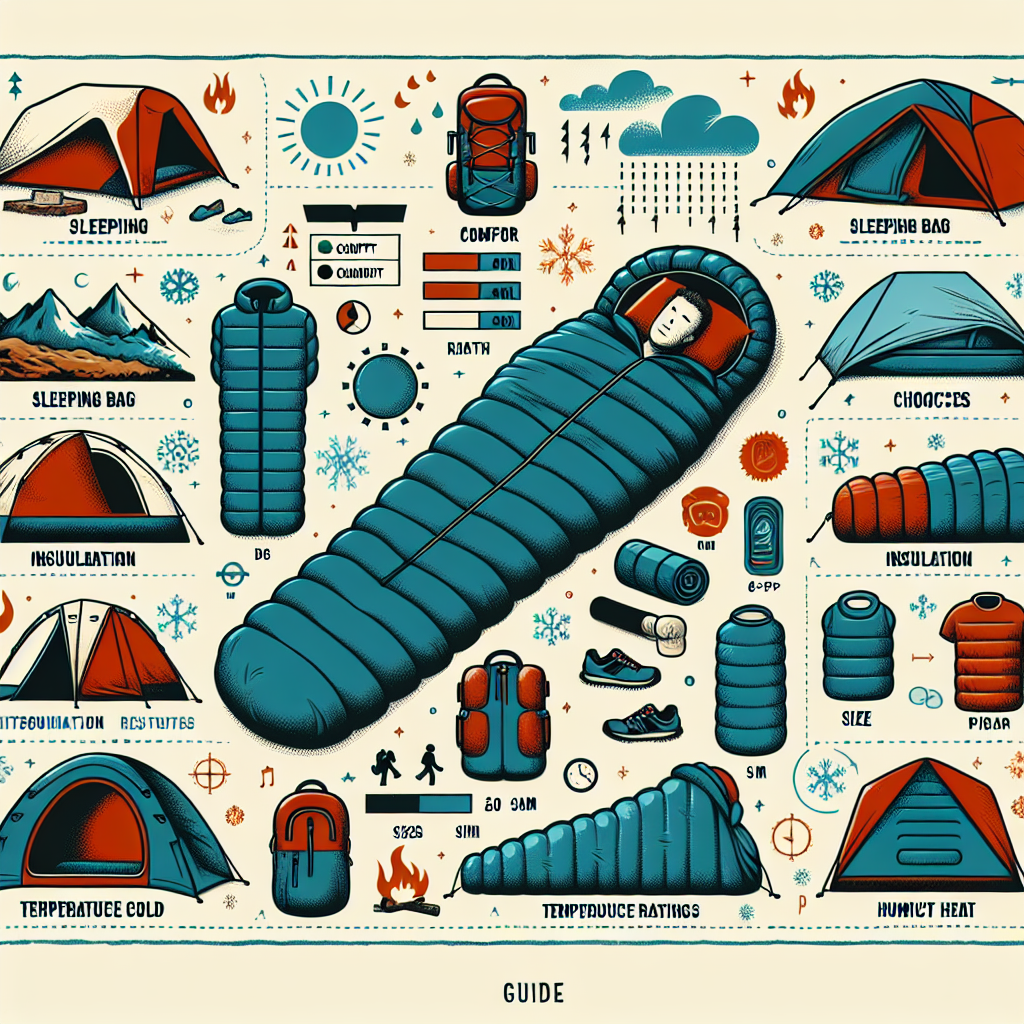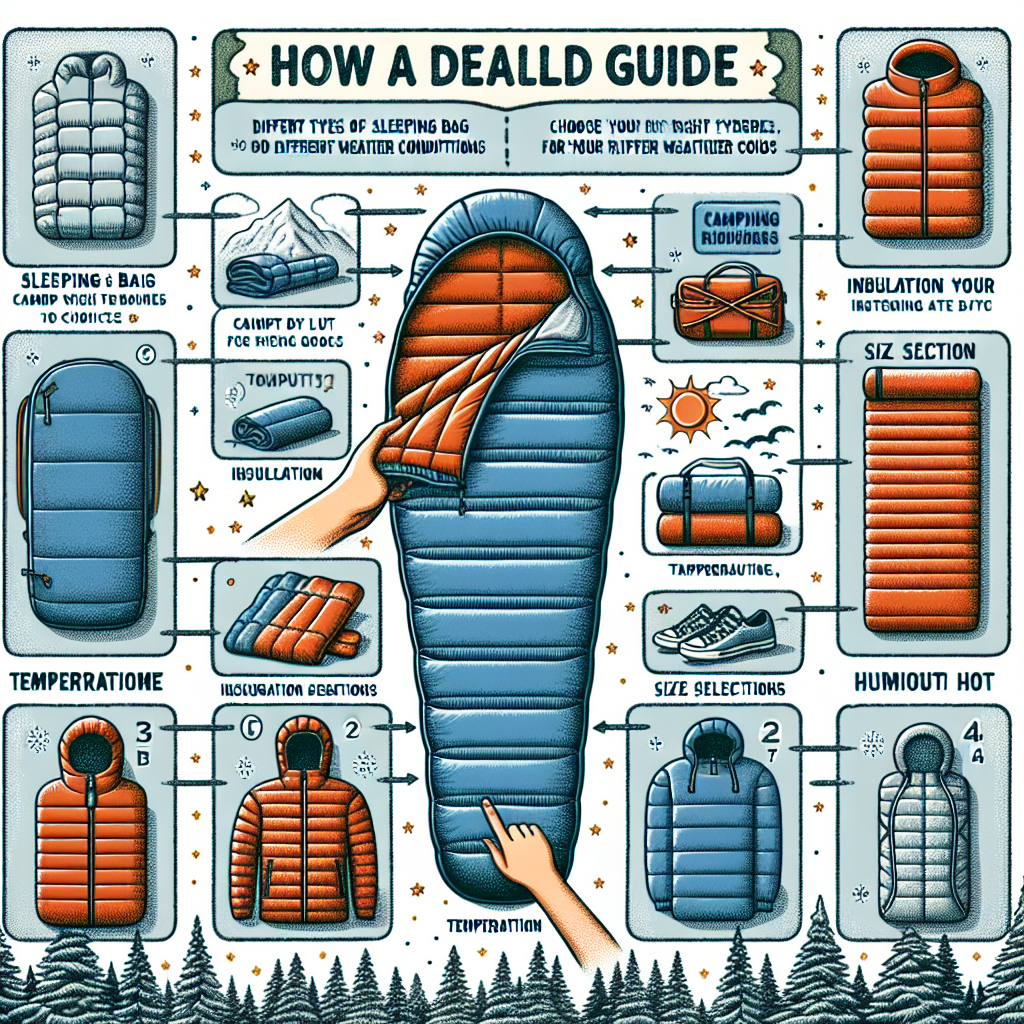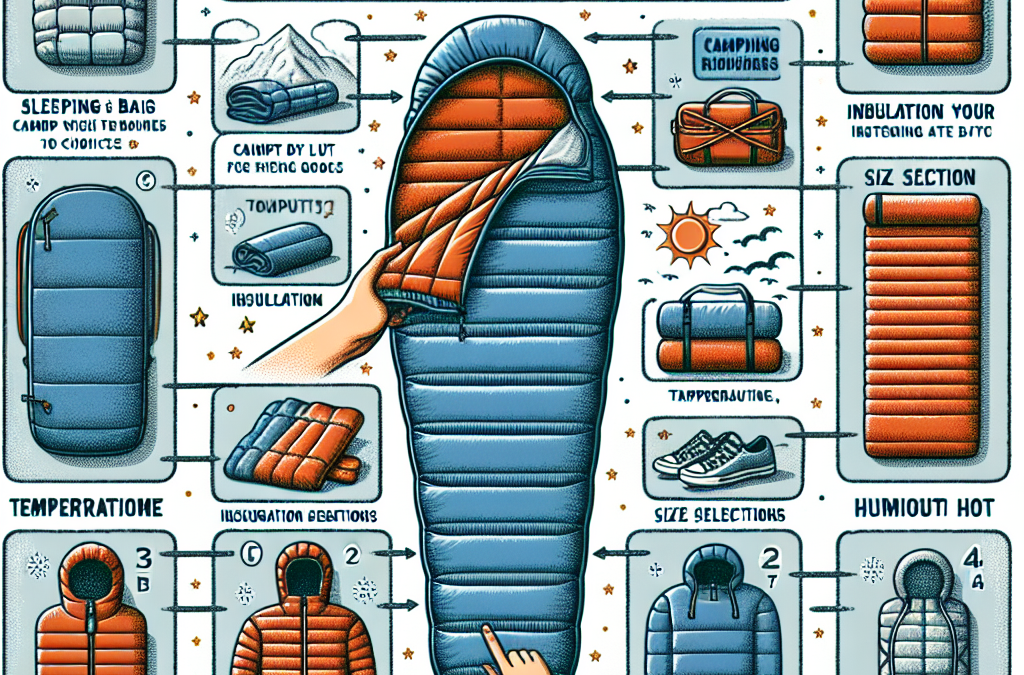Embarking on an outdoor adventure calls for appropriate gear and knowing how to choose the right sleeping bag for every climate is paramount. Throughout this article, you’ll be guided in making an informed choice when selecting a sleeping bag, covering the various types available for different climates. From ones suited for freezing environments to those ideal for tropical settings, TrailTrekTribe offers practical advice based on real-life experiences and rigorous testing. With the aim to foster a community where outdoor enthusiasts exchange experiences and learn from each other, the resources shared at TrailTrekTribe.com are for you, whether you’re an explorer of all things wild, untamed, and exhilarating, or a newbie stepping into the thrill of the great outdoors for the first time. Trust in the expertise and passion of our founder, Noah Parker, and the entire tribe, as we journey together into the heart of nature.
Understanding Sleeping Bag Basics
Choosing the right sleeping bag can make or break your outdoor adventure. But first things first – let’s understand the basics.
Key components of a sleeping bag
The primary components of a sleeping bag include the shell, the lining, the insulation and the zipper. The shell is the exterior part, typically made from durable material to withstand rough conditions. The lining, the inside part of the bag, usually offers a softer, comfortable texture. The insulation is what lies between the shell and the lining, providing warmth by trapping your body heat. The zipper is a crucial factor for both temperature regulation and convenience.
Different styles and designs of sleeping bags
Sleeping bags come in various styles and designs, suitable for different climates and activities. The most common designs are mummy, rectangular, and barrel-shaped bags. Mummy sleeping bags are known for their tapered design and hood feature, offering excellent warmth. On the other hand, rectangular bags offer more room for movement but may not retain heat as efficiently. Barrel-shaped bags are a compromise between the two, offering moderate warmth and some wiggle room.
Understanding sleeping bag materials
Both the shell and the lining of a sleeping bag could be made from a variety of materials, including nylon, polyester, or various blends. The type of insulation also varies, typically between down and synthetic materials. Down provides an unbeatable warmth-to-weight ratio and packs well, but loses its insulating properties when wet. Synthetic insulation, while heavier and less compressible, maintains warmth even when damp.
How Climate Influences Sleeping Bag Choice
The climate plays a significant role in choosing the right sleeping bag for your adventure.
The role of temperature ratings
The temperature rating of a sleeping bag is a guideline about the minimum temperature at which the bag should provide warmth. But remember, these are just guidelines, and individual comfort can vary.
How weather conditions impact sleeping bag choice
In addition to temperature, consider the weather conditions in your chosen destination. Are you heading into rainy weather, or is dry, arid warmth in the forecast? Your sleeping bag needs to be able to handle whatever Mother Nature throws your way.
Consideration of humidity and moisture levels
Humidity and moisture levels can affect your warmth and comfort too. High levels can make your sleeping bag damp, reducing its insulating capability, while low humidity can make the air feel colder than it actually is.

Choosing a Sleeping Bag for Hot Climates
Just as you would dress appropriately for hot weather, your sleeping bag should also be suitable for warmer climates.
Sleeping bags suitable for desert and tropical conditions
In hot conditions like deserts and the tropics, a good rule of thumb is to choose a sleeping bag with a higher temperature rating. These bags have less insulation and are more breathable.
Breathable materials for optimal ventilation
Go for sleeping bags made of breathable materials to allow perspiration to evaporate and maintain an optimal body temperature. Fabrics that provide some moisture-wicking properties can also be helpful.
The importance of a lighter weight and compactness
For hot climates, opt for lighter weight and compact sleeping bags for easier portability. As you won’t need as much insulation as in colder climates, your bag can afford to be less bulky.
Choosing a Sleeping Bag for Cold Climates
If you’re heading to a destination infamous for its cold climate, you need a sleeping bag that can stand up to the challenge.
Insulating properties for extreme cold conditions
For cold environments, opt for a sleeping bag with a lower temperature rating which means more insulation. And while down has its drawbacks, it can arguably provide the best warmth-to-weight ratio.
The role of the sleeping bag’s shape and design for preserving warmth
The shape and design of your sleeping bag can contribute significantly to heat retention. A mummy-style bag with a close fit allows less warm air to escape and prevents cold air from getting in.
Extra features for cold climates
Features like draft collars, hoods, or zipper baffle can make a big difference in keeping you warm. Don’t forget these when considering your options.

Choosing a Sleeping Bag for Wet Climates
When camping in wet conditions, keeping dry is critical. Fortunately, some sleeping bags are designed to offer protection against damp conditions.
Need for water-resistant or waterproof materials
Water-resistant or waterproof materials used in the outer shell of the sleeping bag can prevent moisture from seeping in and compromising your warmth and comfort.
Understanding hydrophobic down insulation
Hydrophobic down is a newer innovation where the down insulation is treated to resist water. Sleeping bags with this insulation offer the best of both worlds – the warmth of down insulation and increased water resistance.
Quick drying materials for humid climates
Materials that dry quickly can also be beneficial in wet or humid climates as they prevent the buildup of moisture within the sleeping bag over the night.
Choosing a Sleeping Bag for Alpine or Mountainous Climates
Alpine conditions can be challenging due to their unpredictable weather patterns and sub-zero temperatures. Your sleeping bag for this environment should be top-notch.
High insulation for frigid alpine night temperatures
Alpine climates demand sleeping bags with high insulation. Typically, these bags have lower temperature ratings and are filled with high quality down or synthetic insulation to handle the deep freeze.
Durability to withstand harsh conditions
Robust and durable materials are a must for alpine or mountainous environments. The materials should be able to withstand the rugged terrain and harsh climatic challenges like strong winds or a heavy fall of snow.
How to handle variable weather conditions
Layering is key to handle rapid weather changes in the mountains. Consider a sleeping bag liner or an over bag for extra insulation if needed.
Match Sleeping Bag With Your Adventure Type
The type of outdoor adventure you’re embarking upon plays a significant role in your sleeping bag choice.
Backpacking: Balance between weight and comfort
For backpacking trips, you’ll want a sleeping bag that strikes a perfect balance between low weight and high comfort. A good option could be a mummy-style bag filled with down insulation.
Car camping: Emphasizing comfort
In car camping scenarios, since you’re not carrying all your gear on your back, you can prioritize comfort over weight. Opt for a bulky, cozy, and plush rectangular sleeping bag.
Bike touring: Compactness and lightness
Bike touring demands compact and lightweight equipment. Choose a sleeping bag that’s lightweight, highly compressible, and easy to pack.
Considering Personal Factors
Personal aspects can also influence your choice of sleeping bag.
Gender-specific designs
Gender-specific sleeping bags are designed keeping in mind the different body shapes and metabolic rates of men and women, providing optimized comfort and warmth.
Sleeping habits and preferences
If you’re a cold sleeper, consider a bag with a lower temperature rating than suggested. If you toss and turn a lot, a spacious design might suit you best.
Physical factors such as height and body type
Sleeping bags come in different lengths and widths. Choose one that matches your body size for a comfortable fit.
Environmentally-Friendly Sleeping Bags
Being nature enthusiasts, it’s important for us to respect and protect our environment.
Understanding the impact of your sleeping bag
Your choice of sleeping bag can have an environmental impact. From the materials used to the manufacturing processes, every step plays a part.
Eco-friendly materials and manufacturing processes
Look for sleeping bags made from recycled materials or organic fibers. Buying from brands that prioritize sustainable manufacturing practices can be a step towards protecting our environment.
Brands that prioritize sustainability
You could consider brands that offset their carbon footprint, donate a portion of their profits to environmental causes, or employ Fair Trade Certified factories.
Bonus Tips from TrailTrekTribe
We’ve collected some extra tips based on our experiences and countless adventures.
Tried and tested sleeping bag recommendations
At TrailTrekTribe, we share our favorite pieces of gear based on thorough testing and real-world use. Stay tuned to discover our recommended sleeping bags for various climates.
Maximizing comfort in your sleeping bag
To enhance your comfort, consider using a sleeping pad beneath your sleeping bag and wear proper sleepwear.
Buying guides and common mistakes to avoid
We know it can be overwhelming to choose the right gear amidst the multitude of options. Our buying guides can help you make informed decisions and avoid common mistakes.
Outdoor adventures are always fun, and having the right gear, including a suitable sleeping bag, can make them even more enjoyable. Remember, adventure awaits, so embark on it rightly equipped. And perhaps most importantly, leave no trace, and help us keep the outdoors beautiful!

